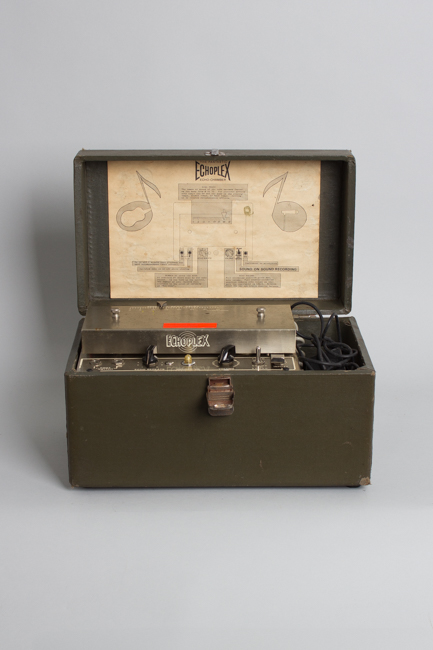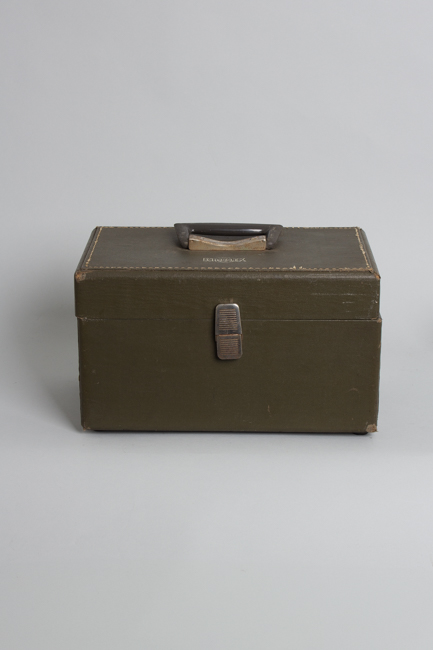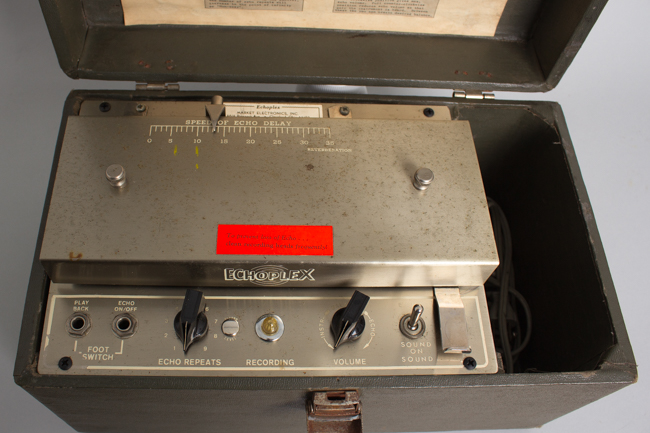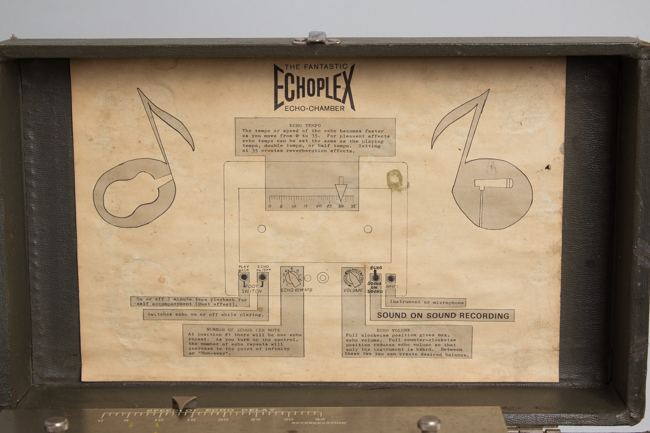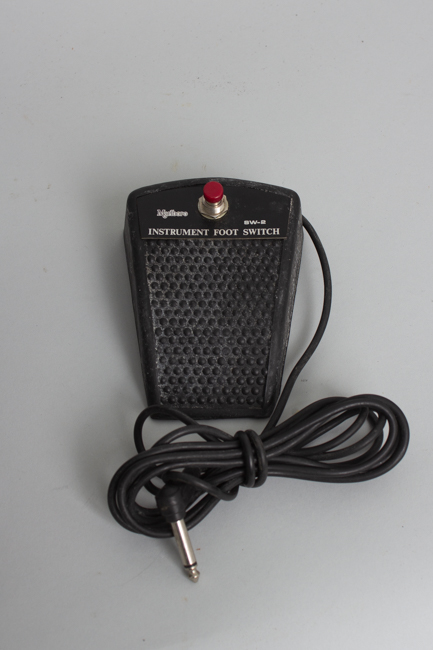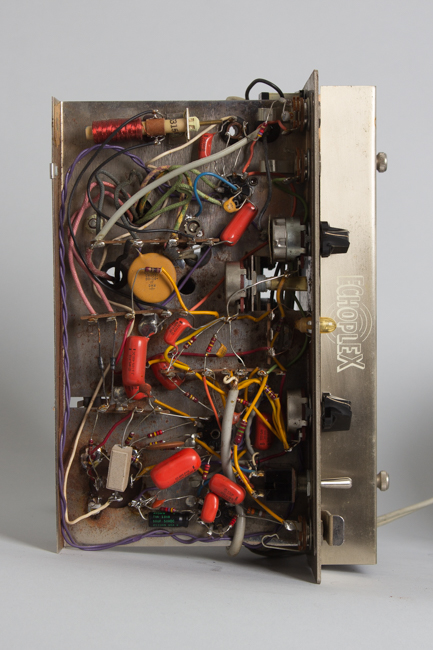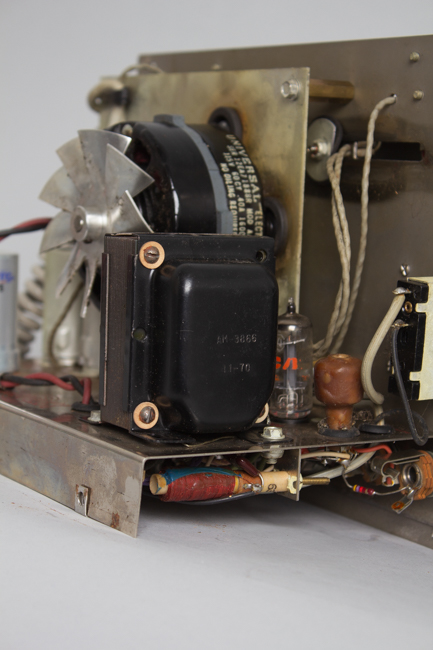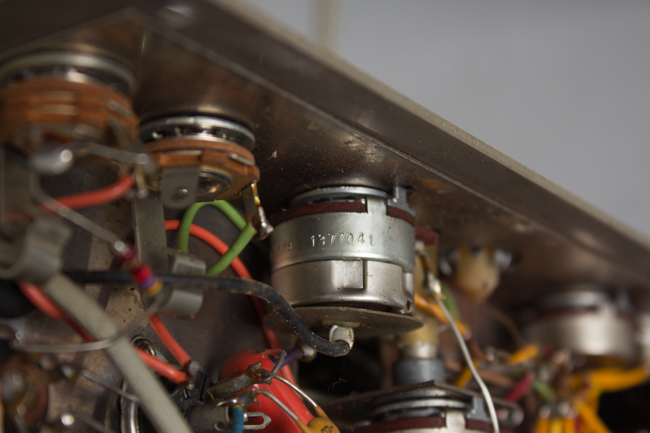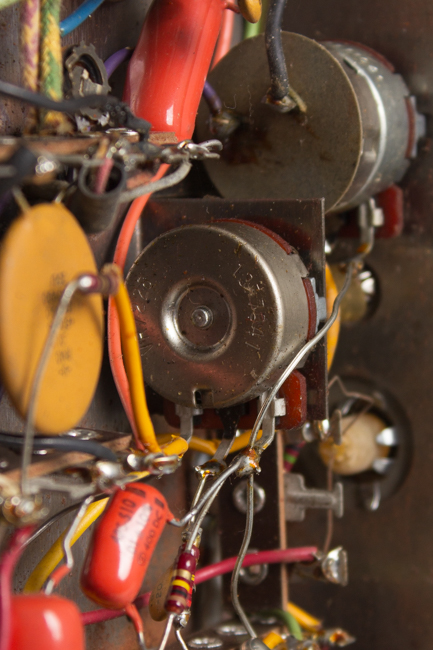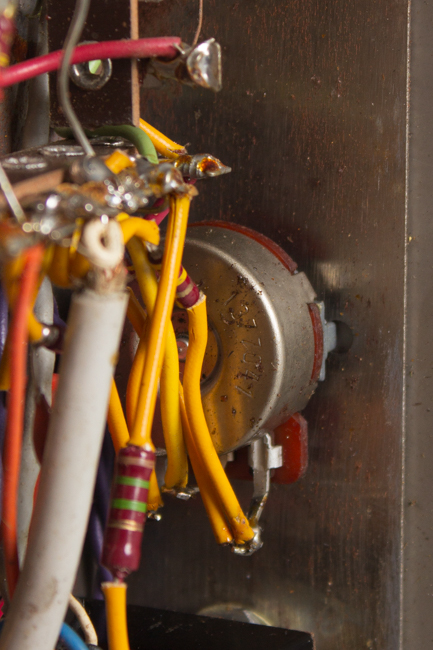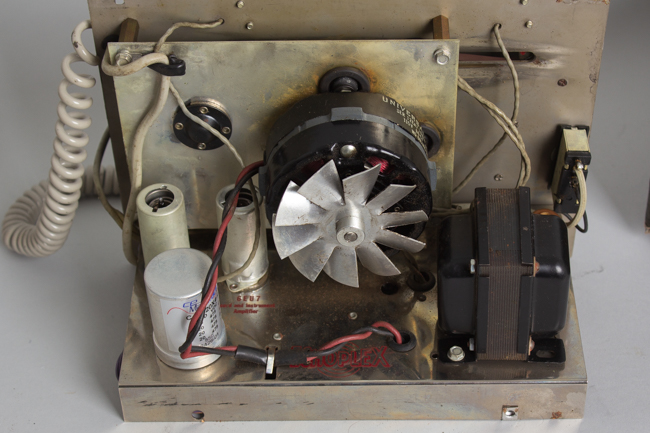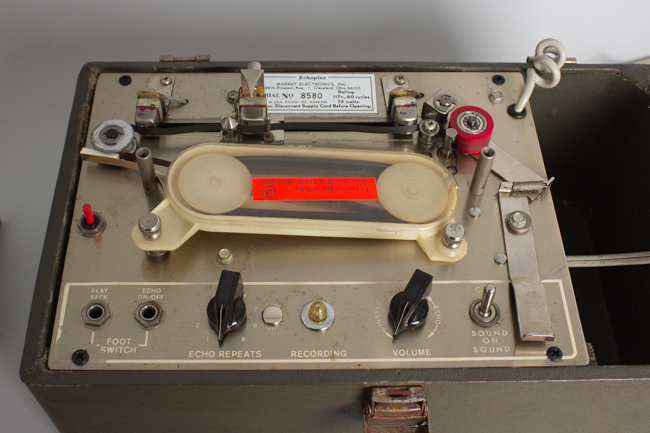Maestro Echoplex EP-2 Echo Effect (1970)
Just Arrived!
This item is currently on hold.
Item # 12742
Prices subject to change without notice.
Maestro Echoplex EP-2 Model Echo Effect (1970), made in Willoughby, Ohio, serial # 8580, Blue Tolex finish.
The Maestro Echoplex is the delay unit that set the standard for these effects, and to many still has never been bettered. The Echoplex emerged from Ohio in the early 1960s, coming on the heels of the 1950s Echosonic amplifier (which had the tape unit built in) and the California-made Ecco-Fonic which was portable but proved glitchy in operation. When it was first built, the original tube-driven Echoplex was not only far more reliable in operation than earlier attempts, but great-sounding as well.
Designed primarily by Mike Battle, the Echoplex was originally built and distributed by a small company called Market Electronics in Ohio. CMI-Gibson's Maestro division later took over the marketing and distribution, although the units were still built in Ohio. Fairly compact and housed in a sturdy box, the Echoplex was the first truly gig-worthy tape echo and became a very popular item, as crucial to many '60s and '70s performers as their guitar and amp.
The Echoplex subsequently went through several iterations, from the initial small-box brown leatherette-clad EP-1 through the solid-state models of the 70s and beyond. This is the last iteration of the tube-era EP-2 models, which included several changes and improvements over the initial design. This iteration is often distinguished by the combined instrument and echo level control (as opposed to the initial independent controls) as well as a "sound-on-sound" switch in place of the second input jack, the last feature added just before the appearance of the new solid-state models. This function defeated the erase head (as in 'playback' mode), but left the record head on and activated a separate playback head, creating a multitrack recorder of sorts, allowing the player to record a track and then add to it when that section of the tape came around again. Thanks to Echoplexes patent-applied-for twin-reel cartridge design, one would get approximately two minutes-worth of tape.
This iteration of the EP-2 features a single input, a repeats (feedback) control, a combined instrument and echo level control (blend), as well as the aforementioned sound-on-sound switch and the adjustable delay time slider. The unit also featured two footswitch jacks, allowing for switching of bypass and playback modes.
One of the more desirable renditions of this classic and era-defining effect, it still stands as one of the coolest effects processors ever made, with a lot of flexibility and a sound all its own. Even in this pocket-size digital era, there are those to whom a real tube Echoplex is still irreplaceable!
Height is 8 in. (20.3 cm.), 14 1/2 in. (36.8 cm.) width, and 9 in. (22.9 cm.) deep.
This is a very clean unit overall, and appears all original. The covering of the box shows some very light scuffing, mostly on corners and edges. The panel and chassis shows some fairly light signs of corrosion, but is overall in good shape. The handle is original and the clasp and hardware shows moderate corrosion. The unit comes with a non-original footswitch branded "Marlboro".
Electrically, the unit is nicely original. Visible pot codes date to late 1970 and the original power transformer bears the code AM-3866/11-70, dating it to November of 1970. The unit has received full maintenance and servicing, including replacement of all electrolytic capacitors, a new tape loop, new pinch roller and belt, the capstan bushings and tension roller lubricated as well as mechanical and electric systems calibrated to optimize good tape repeats.
It is a very nice example of the final tube-era Echoplex; one of the best loved versions of this tape-driven classic and still an exceptional piece of delay equipment with its own sonic character, approximated by modern technology but never really equaled. Overall Excellent Condition.
The Maestro Echoplex is the delay unit that set the standard for these effects, and to many still has never been bettered. The Echoplex emerged from Ohio in the early 1960s, coming on the heels of the 1950s Echosonic amplifier (which had the tape unit built in) and the California-made Ecco-Fonic which was portable but proved glitchy in operation. When it was first built, the original tube-driven Echoplex was not only far more reliable in operation than earlier attempts, but great-sounding as well.
Designed primarily by Mike Battle, the Echoplex was originally built and distributed by a small company called Market Electronics in Ohio. CMI-Gibson's Maestro division later took over the marketing and distribution, although the units were still built in Ohio. Fairly compact and housed in a sturdy box, the Echoplex was the first truly gig-worthy tape echo and became a very popular item, as crucial to many '60s and '70s performers as their guitar and amp.
The Echoplex subsequently went through several iterations, from the initial small-box brown leatherette-clad EP-1 through the solid-state models of the 70s and beyond. This is the last iteration of the tube-era EP-2 models, which included several changes and improvements over the initial design. This iteration is often distinguished by the combined instrument and echo level control (as opposed to the initial independent controls) as well as a "sound-on-sound" switch in place of the second input jack, the last feature added just before the appearance of the new solid-state models. This function defeated the erase head (as in 'playback' mode), but left the record head on and activated a separate playback head, creating a multitrack recorder of sorts, allowing the player to record a track and then add to it when that section of the tape came around again. Thanks to Echoplexes patent-applied-for twin-reel cartridge design, one would get approximately two minutes-worth of tape.
This iteration of the EP-2 features a single input, a repeats (feedback) control, a combined instrument and echo level control (blend), as well as the aforementioned sound-on-sound switch and the adjustable delay time slider. The unit also featured two footswitch jacks, allowing for switching of bypass and playback modes.
One of the more desirable renditions of this classic and era-defining effect, it still stands as one of the coolest effects processors ever made, with a lot of flexibility and a sound all its own. Even in this pocket-size digital era, there are those to whom a real tube Echoplex is still irreplaceable!
Height is 8 in. (20.3 cm.), 14 1/2 in. (36.8 cm.) width, and 9 in. (22.9 cm.) deep.
This is a very clean unit overall, and appears all original. The covering of the box shows some very light scuffing, mostly on corners and edges. The panel and chassis shows some fairly light signs of corrosion, but is overall in good shape. The handle is original and the clasp and hardware shows moderate corrosion. The unit comes with a non-original footswitch branded "Marlboro".
Electrically, the unit is nicely original. Visible pot codes date to late 1970 and the original power transformer bears the code AM-3866/11-70, dating it to November of 1970. The unit has received full maintenance and servicing, including replacement of all electrolytic capacitors, a new tape loop, new pinch roller and belt, the capstan bushings and tension roller lubricated as well as mechanical and electric systems calibrated to optimize good tape repeats.
It is a very nice example of the final tube-era Echoplex; one of the best loved versions of this tape-driven classic and still an exceptional piece of delay equipment with its own sonic character, approximated by modern technology but never really equaled. Overall Excellent Condition.
